Outside of the United States Geological Survey Building in Menlo Park, California beats the sound of Watersongs, 1996 by Douglas Hollis. The dynamic large-scale artwork features granite walls, steel railings and fences, seating, and a fountain composed of natural boulders. The piece functions as an oasis where visitors can walk along or seat themselves within the artwork and listen to the song of water.
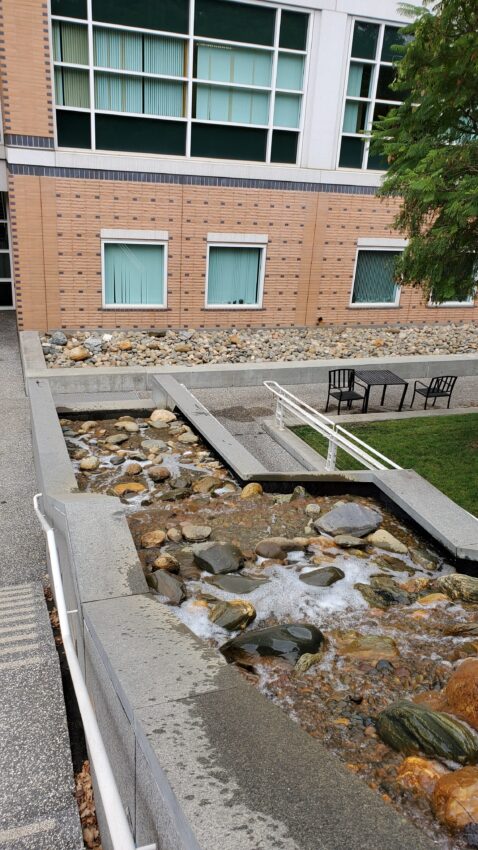
The experience is difficult to capture in an image or words and, unfortunately, this facsimile of a babbling stream coupled with modern materials turned into a river of rust over time.
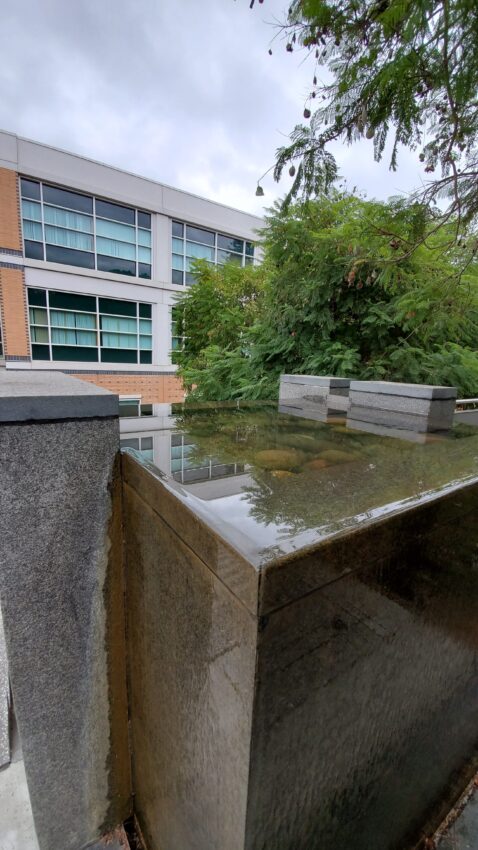
Conservation treatment of the rust in the fountain was needed to restore this artwork to its original appearance. Jim Gwinner, Conservator of Public Art and Sculpture, led a conservation team to perform a conservation treatment for the rust in the fountain as well as other treatment needs in the summer of 2020.
Historic or modern artistic fountains present many unique challenges, and the treatment of historic and modern fountains is an area of expertise at McKay Lodge Conservation Laboratory. Like other outdoor works of art, these pieces endure the elements, vandalism and public interaction, biological growth and corrosion, and natural deterioration experienced by all materials.
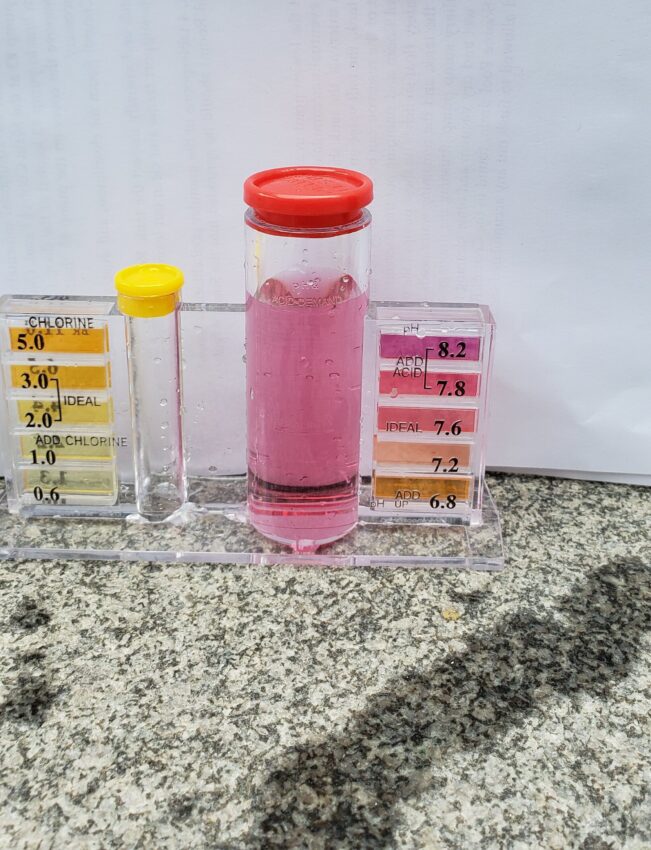
Fountains must also operate continuously. They require regular maintenance, mechanical updates, and treatment of the water. Fountain water usually must be kept within certain health parameters, especially if the fountain is located in a public space. The latter is achieved by replenishing water as needed and the use of chemicals. Even with the best design, fountain maintenance must be performed on a regular basis.
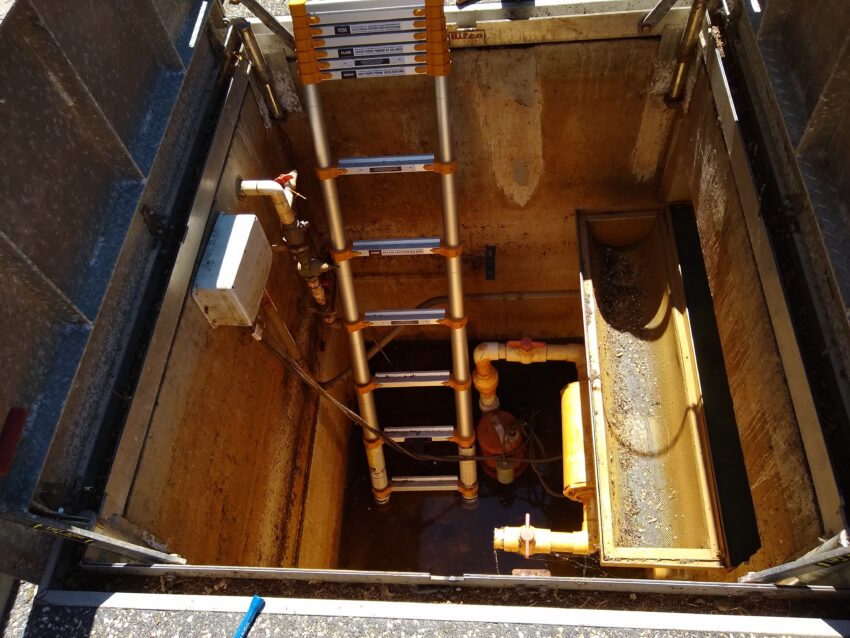
In the case of Watersongs, ferrous pumps had been used in its construction. Over time, the pumps corroded and the rust was carried throughout the system, in turn depositing on the other elements of the artwork. It is a condition issue that Conservator Gwinner has seen in other artworks with water features, and not at all unusual.
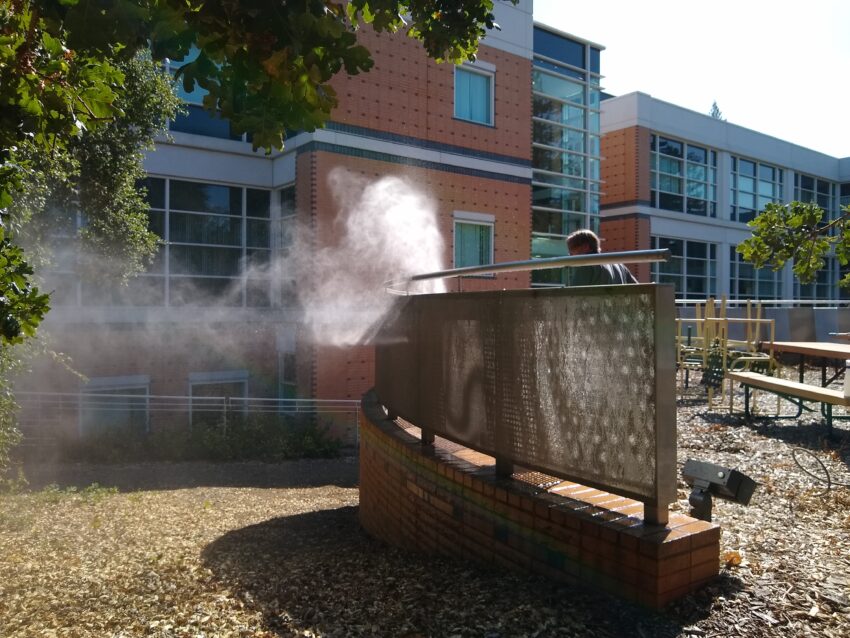
All the ferrous materials were stripped from the reservoir and replaced with a fiberglass or a stainless-steel alternative. The walls and all the components of the reservoir were also cleaned with an aqueous solution containing acid; these steps were effective for removing the rust staining and the biological growth that was present. Solvents were also used to clean other areas of the artwork, such as the vortex pool.
The granite source pool and stream bed and stainless steel components were washed with a pressure washer and an aqueous solution containing acid. This was effective at removing the rust staining and the biological growth that was present. The conservation treatment of the rust in the fountain was a success.
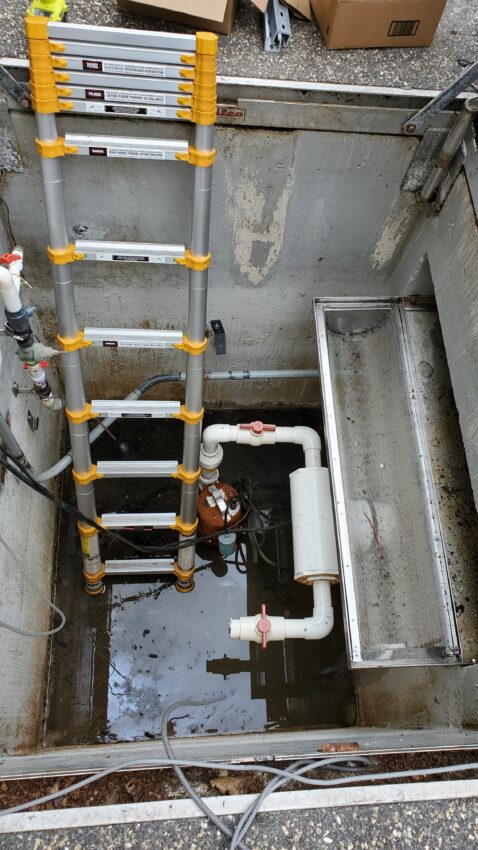
The granite blocks that comprise the stream bed were re-caulked. This was done by removing the old material and expired backer rod and filling the seams with high performance caulk.
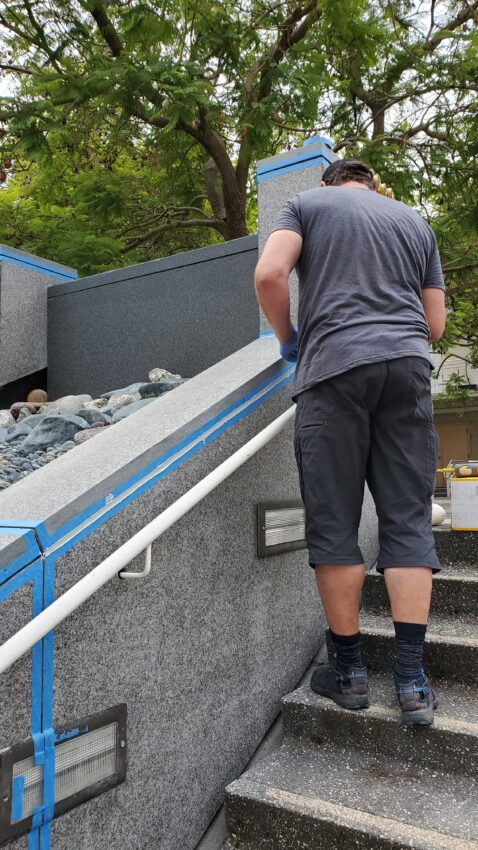
After treatment, recommendations for an updated water filtration systems were provided, but in interim, water can be changed frequently to avoid the accumulation of total dissolved solids in the water. These solids can fall out of suspension and create unsightly deposits on the surface of the artwork.
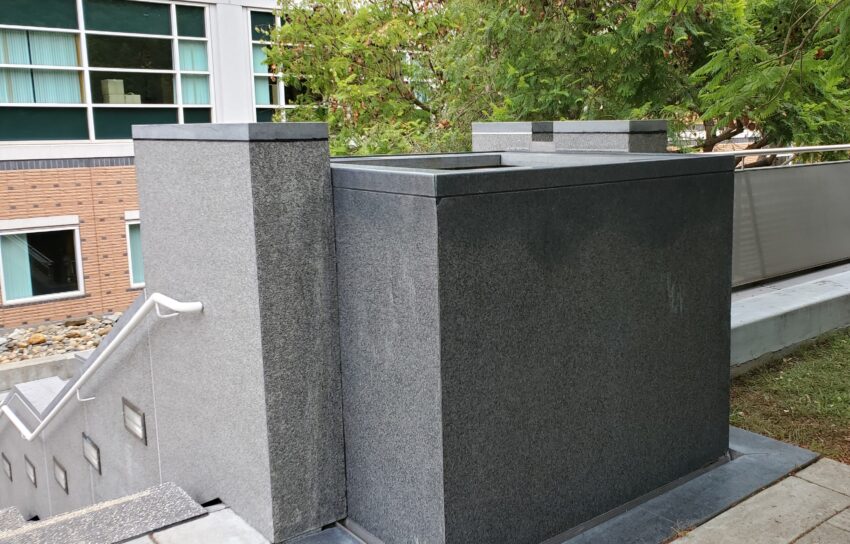
Before the treatment was complete, Gwinner also had contacted the artist Douglas Hollis to determine if any changes were made from the original design. Gwinner provided suggestions based on this conversation for modifications that better suited the artist’s original intent.
The artist, Douglas Hollis, was born in 1948 and raised in Ann Arbor, Michigan. He pursued an education at the University of Michigan. His early years are marked by an interest in Native American culture, and he even lived with Native American families in Oklahoma. Hollis began creating wind and water activated site specific works in the 1970s, and he now has a number of works throughout the United States. Watersongs located in Menlo Park, California is one of the those artworks.
